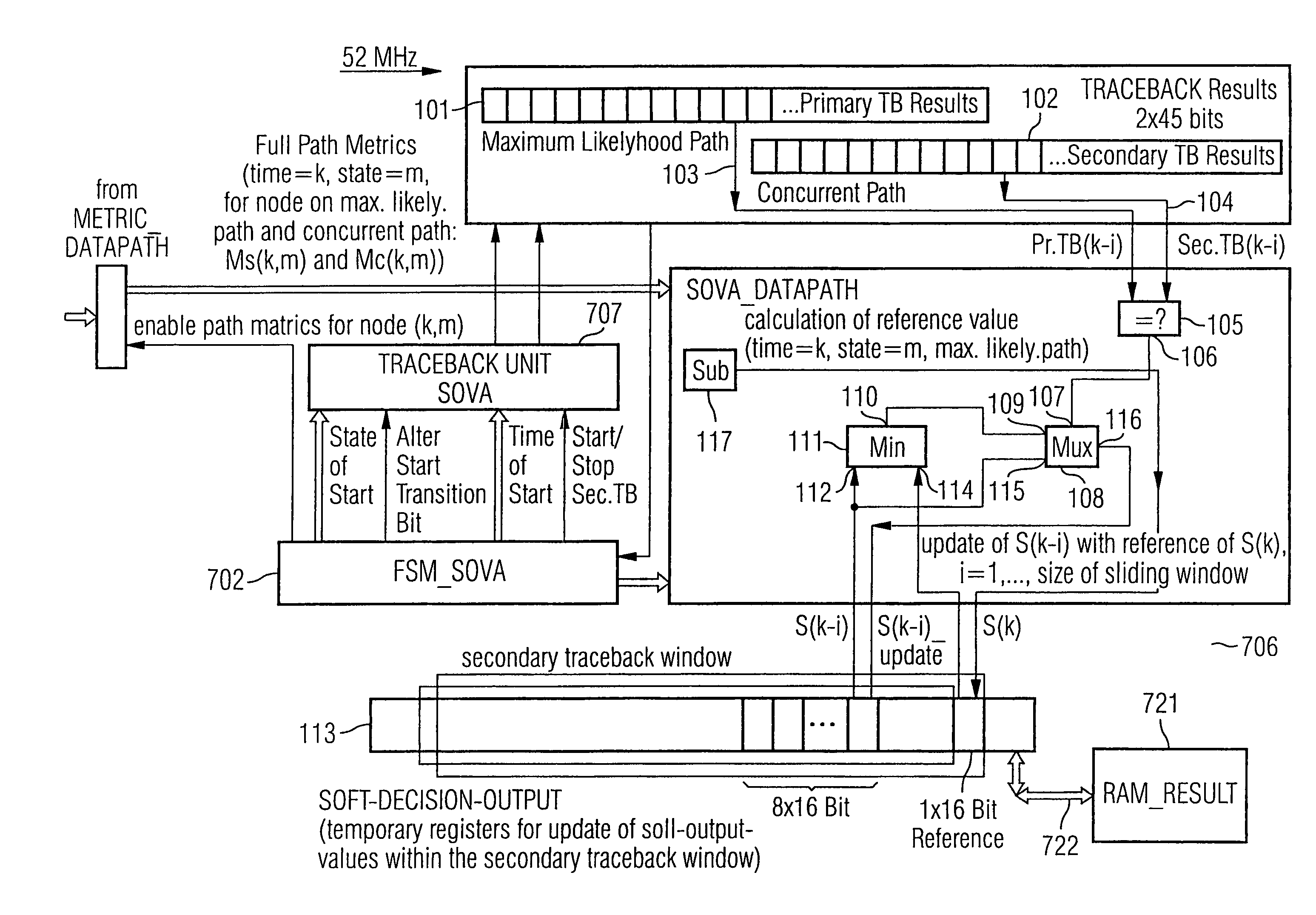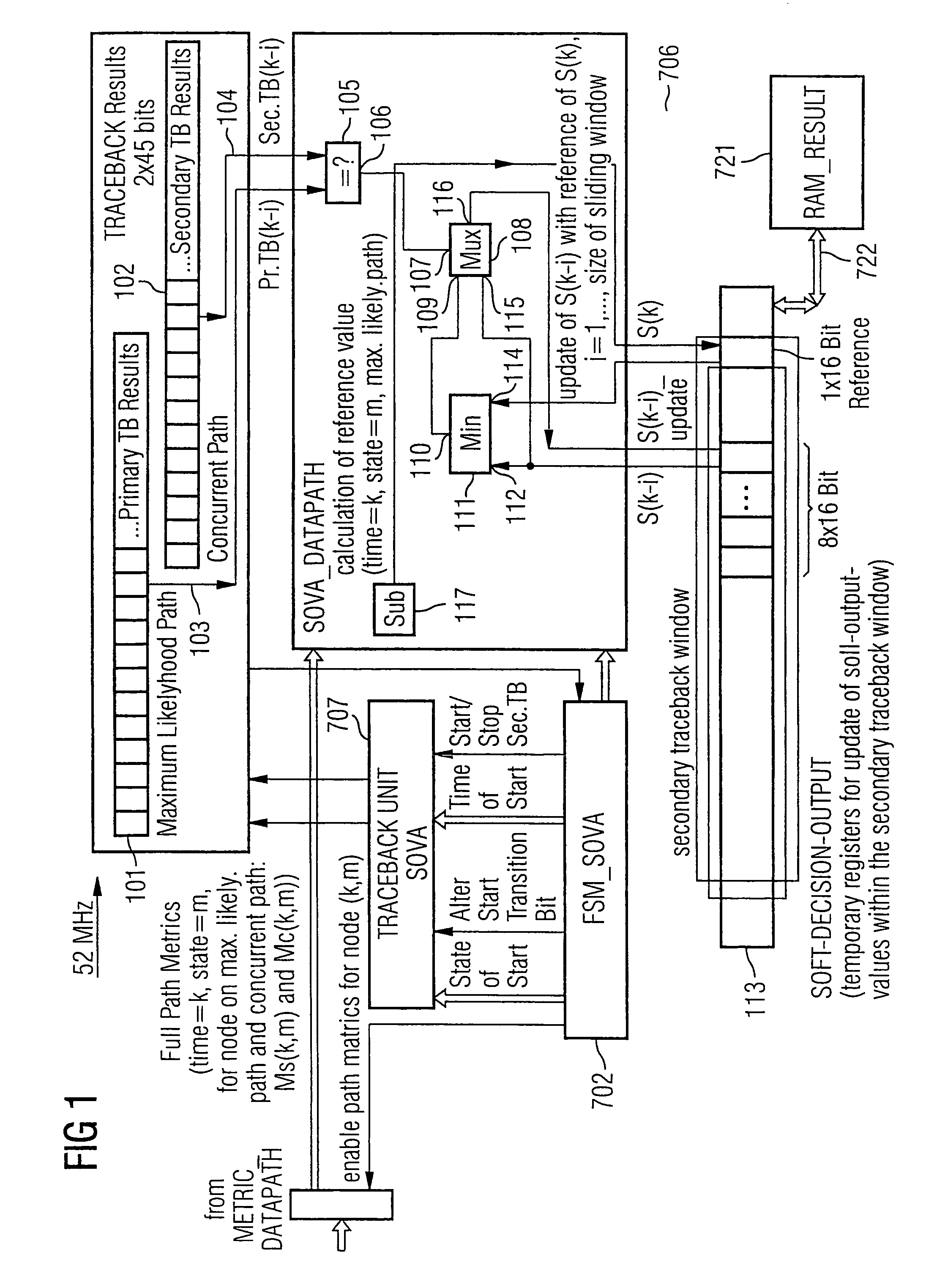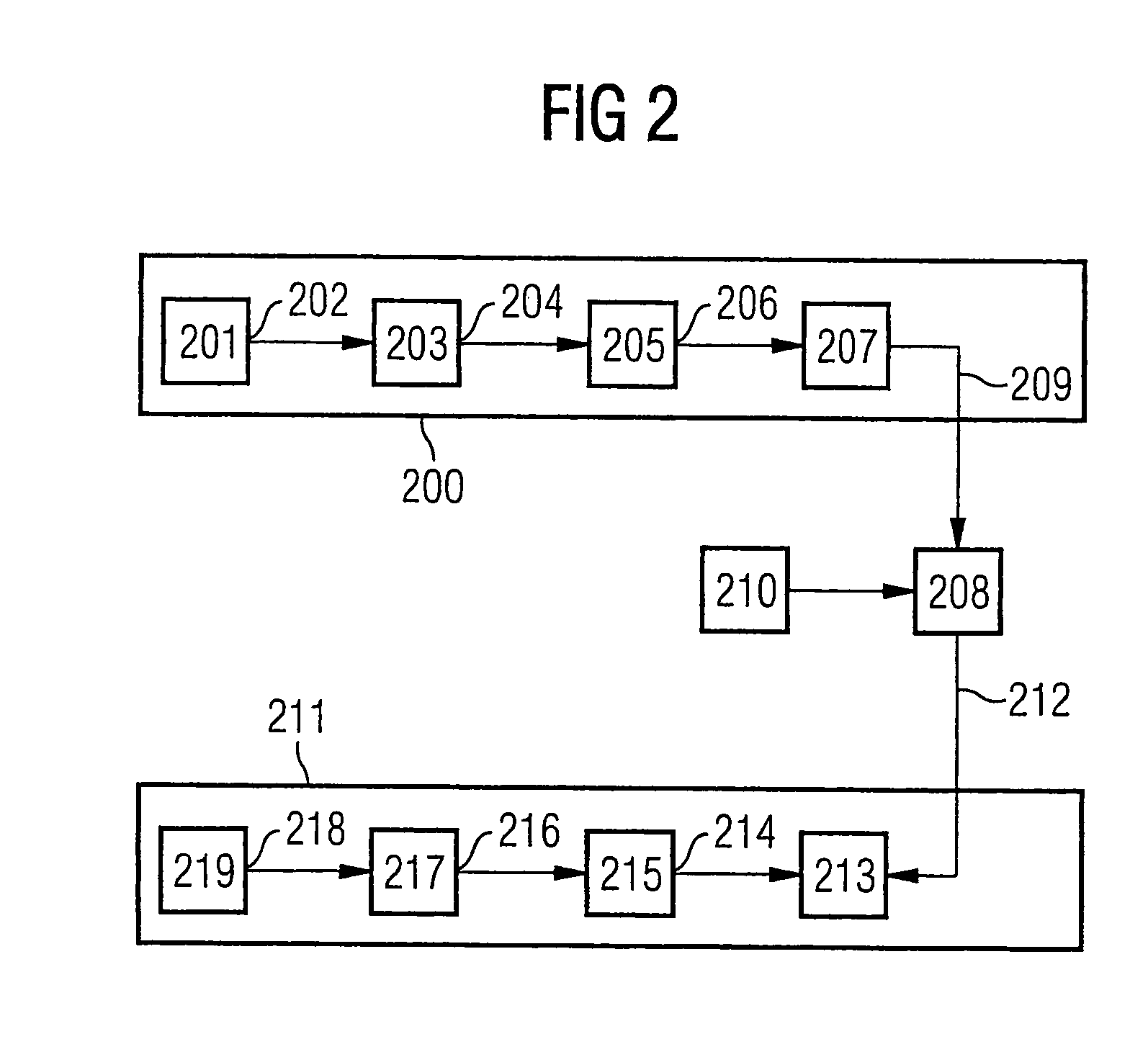Method and device for decoding a sequence of physical signals, reliability detection unit and viterbi decoding unit
a physical signal and sequence technology, applied in the direction of coding, amplitude demodulation, code conversion, etc., can solve the problems of insufficient reliability information, inability to provide any reliability information whatsoever on the quality of the channel decoding process, and inability to determine the reliability of the decision, so as to speed up the decoding process
- Summary
- Abstract
- Description
- Claims
- Application Information
AI Technical Summary
Benefits of technology
Problems solved by technology
Method used
Image
Examples
Embodiment Construction
[0075]FIG. 2 shows, symbolically, a source 201 from which a message 202 is intended to be transmitted from a transmitter 200 to a sink 219 in a receiver 211.
[0076]The message 202 to be transmitted is supplied to a source coder 203, where it is compressed such that, although no information is lost, redundant information that is superfluous for the decoding of the message 202 is eliminated, and the required transmission capacity is thus reduced.
[0077]The source coder 202 emits a code word 204
uε{±1}k, (1)
which consists of a sequence of digital values. In this case, the assumption is made for each code word 204u that each value ui, i=1, . . . , k, of each code word 204u has an equal probability of assuming a first binary value (logic “0”) or a second binary value (logic “1”).
[0078]The code word 204u is supplied to a unit for channel coding 205, in which channel coding of the code word 204u is carried out. During the channel coding process, redundant information is deliberately added to...
PUM
 Login to View More
Login to View More Abstract
Description
Claims
Application Information
 Login to View More
Login to View More - R&D
- Intellectual Property
- Life Sciences
- Materials
- Tech Scout
- Unparalleled Data Quality
- Higher Quality Content
- 60% Fewer Hallucinations
Browse by: Latest US Patents, China's latest patents, Technical Efficacy Thesaurus, Application Domain, Technology Topic, Popular Technical Reports.
© 2025 PatSnap. All rights reserved.Legal|Privacy policy|Modern Slavery Act Transparency Statement|Sitemap|About US| Contact US: help@patsnap.com



